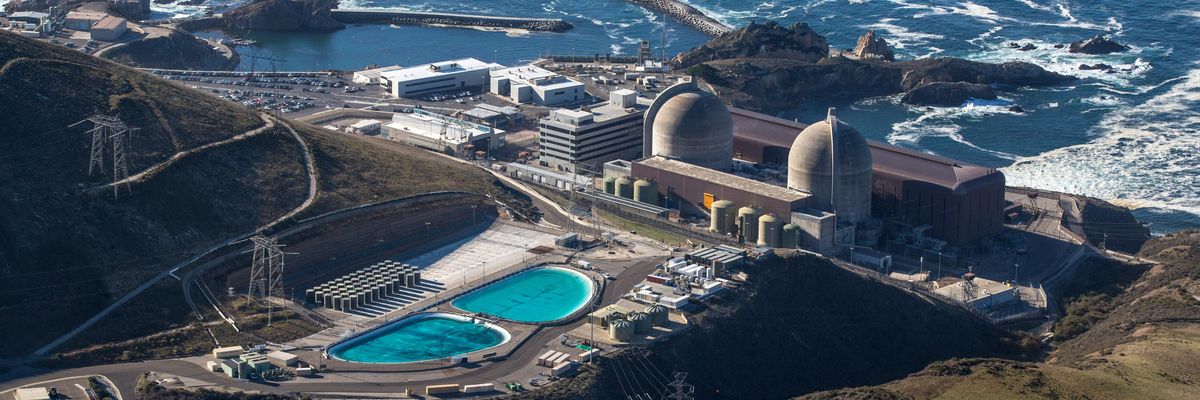Keeping California's last nuclear power plant running could cost customers of the state's largest utility as much as $45 billion through 2045, according to an analysis published Tuesday.
Pacific Gas & Electric's (PG&E) Diablo Canyon Power Plant—located near Avila Beach in San Luis Obispo County—was slated to be closed in 2025. However, last September, California state lawmakers overwhelmingly approved legislation signed by Democratic Gov. Gavin Newsom to keep the nearly 37-year-old facility online until 2030, a decision Environmental Working Group (EWG) president Ken Cook called a "dangerous and dumb" impediment to "California's drive to make solar and wind the prevailing sources of electricity in the state."
"The power this problematic plant generates could easily be replaced by new clean energy investments."
In a move EWG blasted as a "cave to PG&E," the U.S. Nuclear Regulatory Commission in March subsequently approved the utility giant's continued operation of Diablo Canyon without a renewed license or safety review while the company seeks a 20-year extension.
The following month, the environmental advocacy group Friends of the Earth sued PG&E, arguing that the company breached its contract to close the plant.
If Diablo Canyon remains operational through 2045, EWG estimates PG&E customers would be on the hook for between $20 billion and $45 billion or more.
"And that's just the expense of prolonging the troubled facility's life," the green group said. "It doesn't account for the enormous extra costs that would be incurred following a major disaster like a reactor leak or an earthquake that damages the plant."
In a statement Tuesday, Cook said that "keeping Diablo Canyon open past its closure date is a terrible idea for many reasons, including the staggering price tag that unwitting ratepayers will face for keeping the dilapidated and dangerous nuclear plant operating."
"Let's be clear," he added, "the tens of billions it will cost to keep Diablo Canyon operating will ultimately be borne by PG&E's ratepayers, who already pay some of the highest electricity bills in the country, while the monopoly's shareholders will reap additional profits."
Plant proponents claim it will be difficult to achieve California's goal of transitioning to 100% renewable energy by 2045 without Diablo Canyon.
However, Grant Smith, EWG's energy adviser and a co-author of the new analysis, argued that "the power this problematic plant generates could easily be replaced by new clean energy investments."
California has committed to slashing planet-heating greenhouse gas emissions by 85% and achieving carbon neutrality by 2045 amid a worsening climate emergency.

